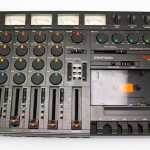Zebu
 One of the best bands I have been in was Zebu. It wasn’t the most musically competent, but it was definitely the best band. Zebu was a guitar, bass and drums power trio with an all for one and one for all ethos defined by Pat Mello and Joey Schaaf, two veteran punk rock musicians. We bitched, argued and performed the good and bad together and our shows were no-holds-barred, on-the-edge affairs that always moved rooms and people. Total rock ‘n’ roll release. The only other band that came close was the Ho, but that was The Who’s material.
One of the best bands I have been in was Zebu. It wasn’t the most musically competent, but it was definitely the best band. Zebu was a guitar, bass and drums power trio with an all for one and one for all ethos defined by Pat Mello and Joey Schaaf, two veteran punk rock musicians. We bitched, argued and performed the good and bad together and our shows were no-holds-barred, on-the-edge affairs that always moved rooms and people. Total rock ‘n’ roll release. The only other band that came close was the Ho, but that was The Who’s material.
Zebu used to have pot and Oly beer fueled jams/rehearsals that produced almost all our material. Some of our more epic numbers were worked out from ideas brought in by Pat or me, but things usually started with a guitar riff or a pop/punk chord change, slammed into overdrive by the insane bass playing of Pat and urgent and often disfunctional drumming of Joey (the Tom Jones of drumming). This mix quickly dictated the direction of the music, with Pat and Joey picking spots to take for their own. The lyrics and melodies came fast and furious and this kept the intensity intact. We used to rely on tapes of these sessions to figure out what the heck we had done. Then we put work into the songs. We rehearsed a lot. We had to because Joey, at this point deep into his stoner phase, was either forgetting his parts or inventing new ones, thinking they were old ones. I remember hating it at times. Just one of the seeds of our eventual undoing.
I found an Old VHS of a 1999 set that ran 90+ minutes, with the last 30+ simplay making up songs on the spot. I had posted it on instagram, but I’m gone from social media now, so will get a version up here asap.
Alternatively described as ‘a cross between the Minutemen and the Who’ and ‘the Pink Floyd of punk rock’, Zebu was criminally under-recorded. We did a great four song studio recording that captured our ‘pop/punk’ thing but omitted the trippy punk/freejam side of the equation. A handful of live board tapes captured some of that, but with unfortunate sound quality.
 Zebu’s heyday was 1997-2001. We still get together every once in while for a reunion show when the three of us are in Oakland at the same time. The last one was in 2006, after four years off, and it kicked ass. We made ten special Zebu reunion CDrs for that show. Each one had one song that the other nine did not. Those sold out quick. This past October, we got together for a private jam over at Jack Canada’s house. It was like the old days, small sweaty space, loud as hell and cheap beer. I wasn’t expecting much to come of it, but the energy of the Zebu was not to be denied. We absolutely rocked, wrote several great songs, long since forgotten. Too bad the tape wasn’t rolling…
Zebu’s heyday was 1997-2001. We still get together every once in while for a reunion show when the three of us are in Oakland at the same time. The last one was in 2006, after four years off, and it kicked ass. We made ten special Zebu reunion CDrs for that show. Each one had one song that the other nine did not. Those sold out quick. This past October, we got together for a private jam over at Jack Canada’s house. It was like the old days, small sweaty space, loud as hell and cheap beer. I wasn’t expecting much to come of it, but the energy of the Zebu was not to be denied. We absolutely rocked, wrote several great songs, long since forgotten. Too bad the tape wasn’t rolling…
Long ride the wild Zebu.















